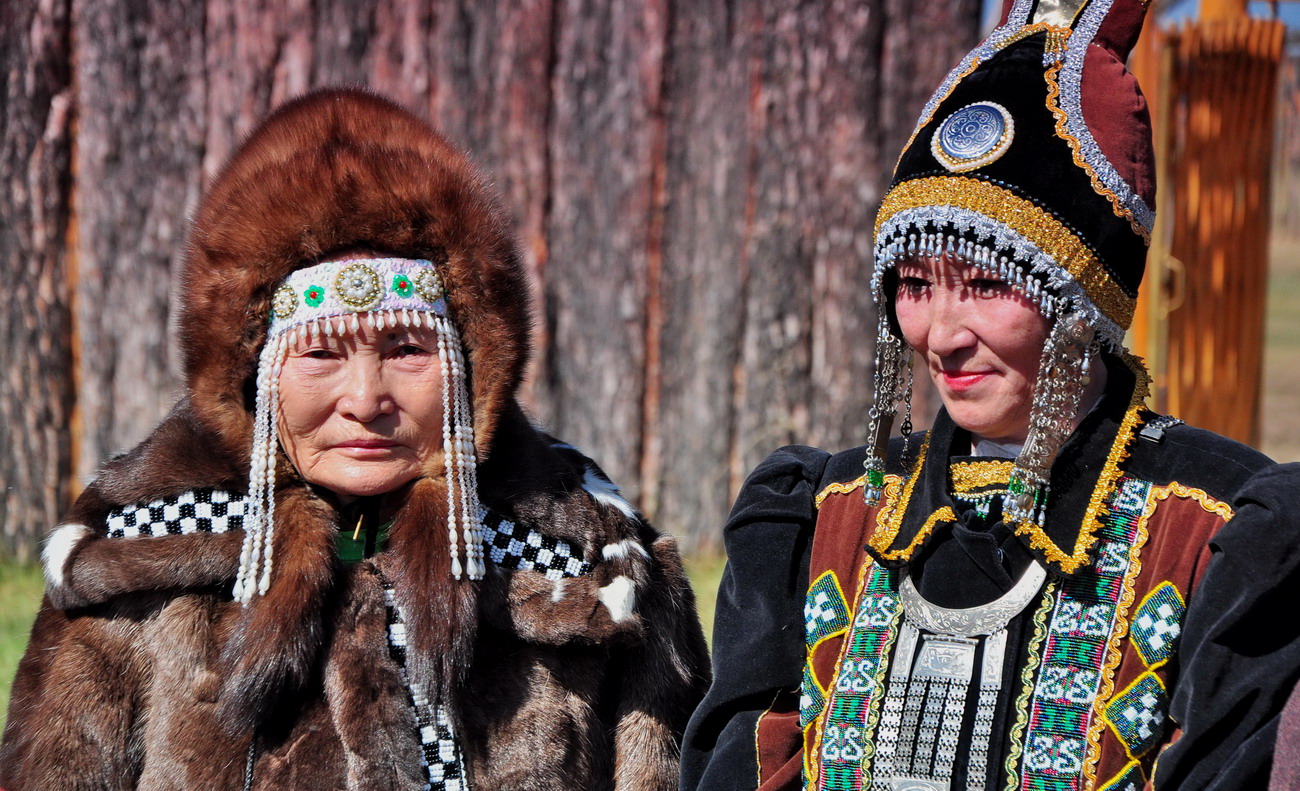Yakuts are the herders and hunters of the middle Lena river basin. They are the Turkish-speaking people who moved northward to the middle Lena region from the Central Asia because of the attacks of other stronger Mongol pastoral communities in the 13th century.
Yakuts at present are surrounded by Yukaghirs in the north-east and Tungus in the south and south-east. The coldest part of Siberia (Verkhoyansk in the Yana river basin) lies in Yakutsia Republic.
The climate of the Yakut region (Yakutia) is very severe. Verkhoyansk has a recorded extreme range of temperature, being -65 °C. Oymyakon farther to the south, on the upper reaches of the Indigirka River, has reported temperature as low as -68°C. Throughout this region, the sub-soil is permanently frozen.
ADVERTISEMENTS:
Despite the physical handicaps, some agriculture has proved possible, since the inhabitants use greenhouses to force plants to an early maturity before transplanting them. Barley, wheat, rye, and root and leaf vegetables are cultivated.
In the extreme cold conditions of Lena basin (eastern Siberia, the Yakuts raise livestock (cows) essentially for food and horses for riding during the short summer season of July and August.
Yakuts up to the 16th century was the cattle and horse herders of the steppe grasslands roaming to the south-west of Baikal Lake.
ADVERTISEMENTS:
They were however as stated above forced to migrate northward during the period of disturbance and expansion among their Mongol neighbors.
In this process of their northward migration, they took their horses and cattle with them to taiga-tundra in the middle Lena basin.
In the harsh and extremely cold winter environment of eastern Siberia, many of them lost their livestock and horses, and started reindeer-keeping.
In fact, they are still in transitional stages that are shifting from livestock and horse-keeping to the reindeer-herding. Despite adverse geo-ecological and environmental conditions, a minority of Yakuts retains a livestock and horse-herding economy.
ADVERTISEMENTS:
In order to sustain their horses and cattle, they have to work overtime during the short summer, gathering short-lived grasses for hay to provide fodder to the animals during the long winters.
Surprisingly enough, the horses and cattle have been persuaded to take of reindeer meat and fish as a substantial part of their diet instead of fodder and grasses.
Most of the Yakuts now ride on reindeer as horse can be used for riding for only about two months of summer, i.e., July and August, but they still retain horse sacrifice and Kumiss festival. They use cow-milk and their reverence for the horse is undiminished.
The Yakuts’ economy under Russian rule combines the primitive and the modern. Many native still pursue their traditional pastoral nomadism, hunting, trapping and fishing. But, in some localities, livestock rising has been collectivized, modern techniques have been introduced and fishing has been commercialized.
The Republic of Yakutia has become nearly self-sufficient in foodstuff. Enough lumber from tremendous timber resources in the south, and tin and gold from the Aldan mines are produced for export. It has 60,000,000,000 tons coal reserve. Moreover, several iron ore, silver and lead deposits and oil pools exist, but exploitation is small.
Lack of transportation is the major handicap to Yakuts. Only in summer are the rivers navigable and the northern sea-route in operation.
Yakutsk is the capital of Yakutia, located in the north-eastern Russia. The city is a trade centre, situated about 885 miles north-east of Chita on a tributary of the Lena river. Founded in 1632, it is an important centre for the Siberian fur and ivory. Yakutsk is the cultural centre, having two theatres, a big library, and numerous schools.
The Lena River is about 16 kms (10 miles) wide at Yakutsk and is shallow near the banks. It remains frozen for over 220 days, while it floods in the June thaw.
There are also sawmills, and woodworking plants in it. The Russian government is making serious efforts to transform the mode of life of the Yakuts by providing them education, medical facilities and training in livestock and reindeer-keeping.

